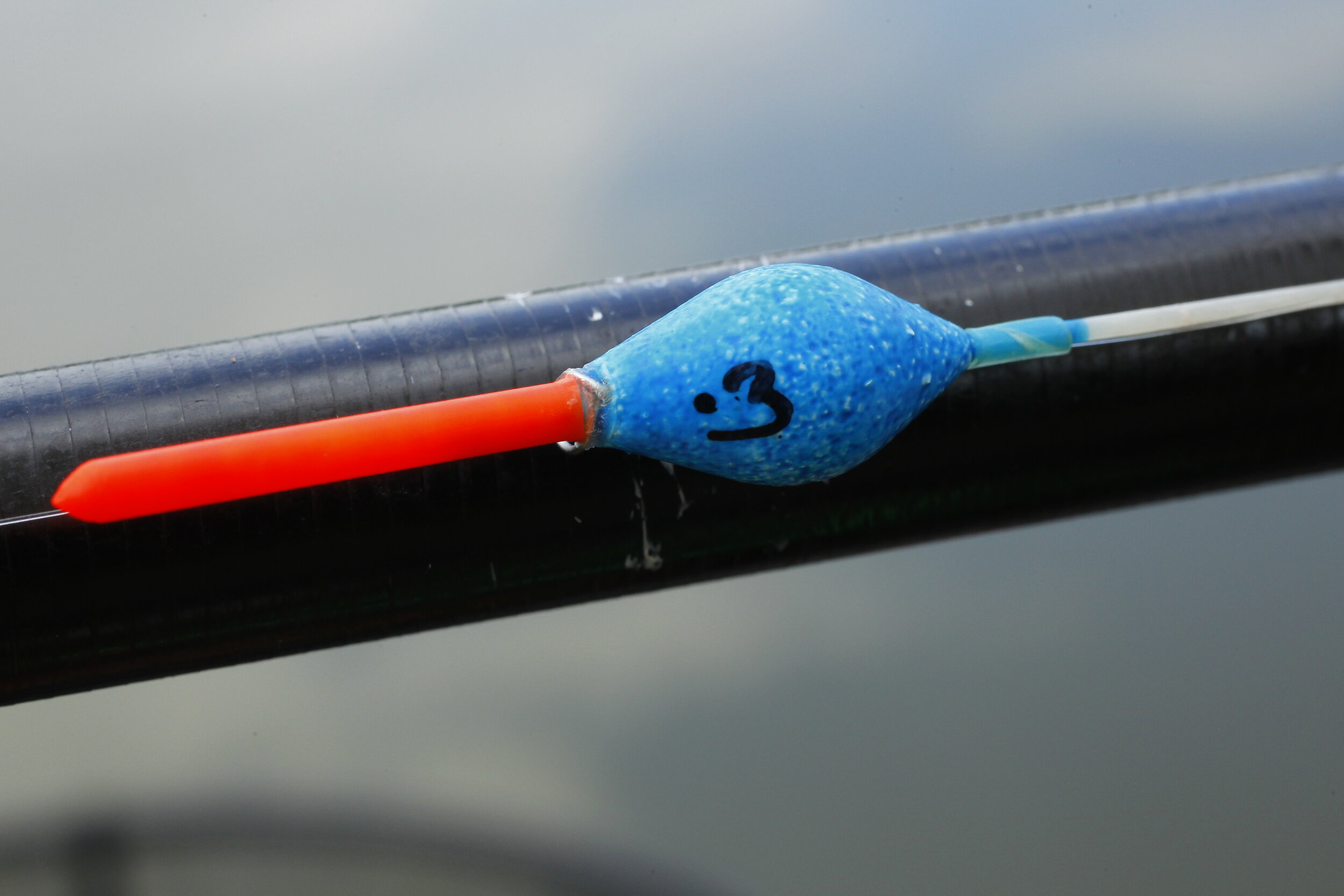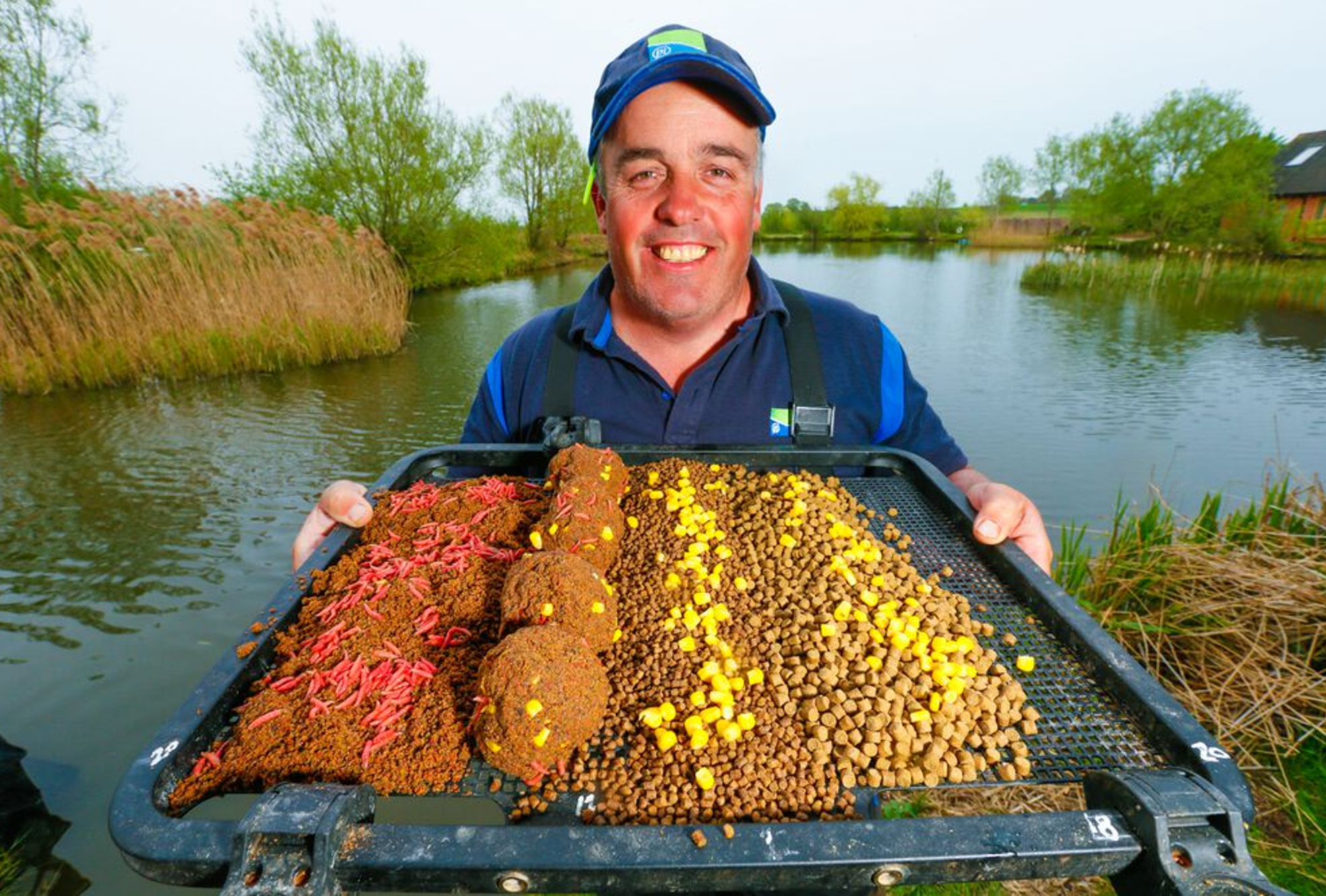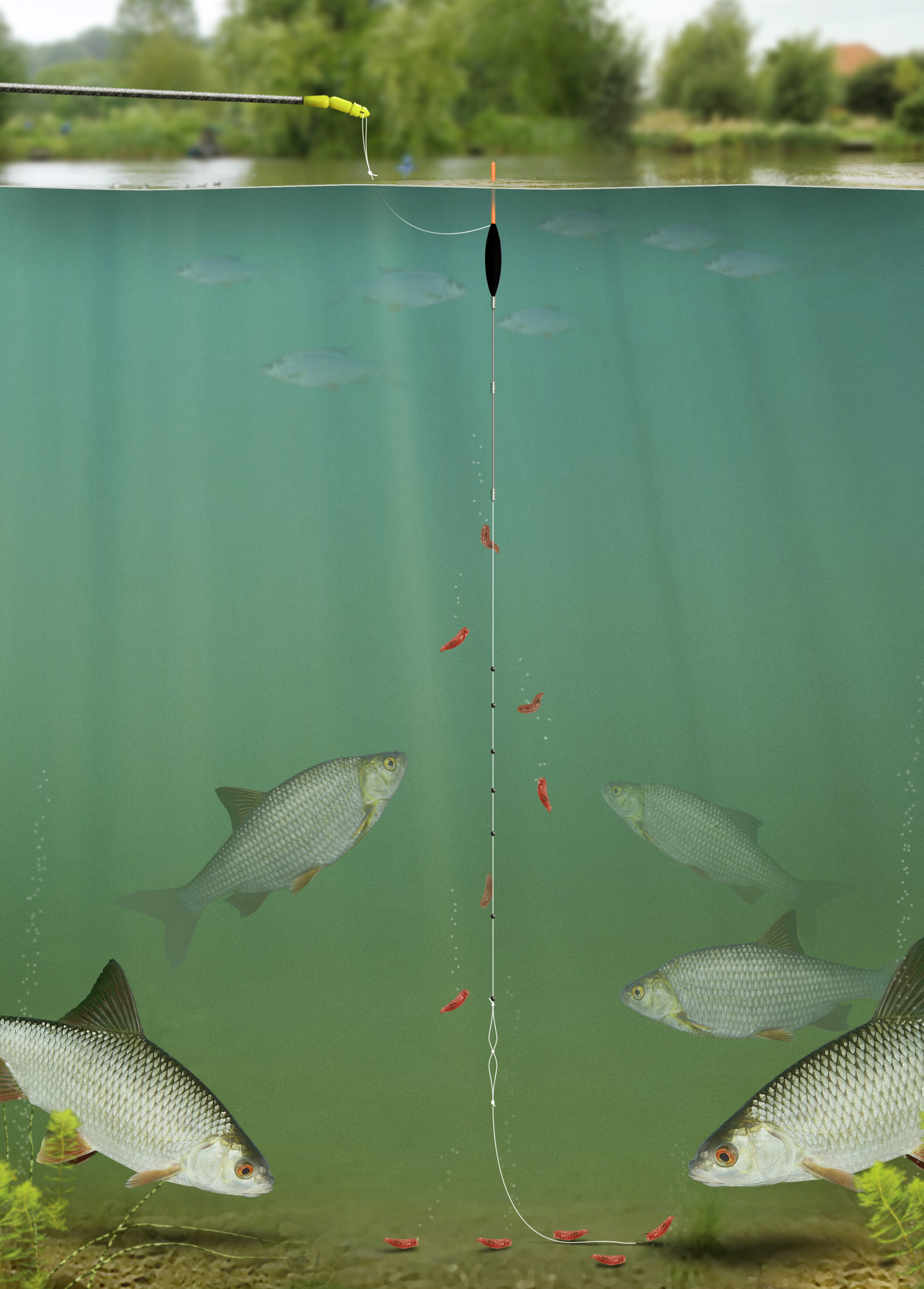Match Fishing Tips | Five tips to fish the margins this autumn
Despite colder nights there are still lots of fish to be caught in the edge – using a more cautious approach…
Easy on the feed
WITH summer now just a memory, piling in lots of groundbait and dead maggots down the edge has no part to play. Success is all down to how much – or rather how little – bait that ends up getting fed. Be wary of overfeeding the carp. Precision feeding with tiny amounts always catches more fish in early autumn.
Opening feed should barely cover the bottom of a large pole cup – effectively a small handful of dampened micro pellets and a few bits of meat and corn.
After that, switch to a Kinder pot holding a few micros and bits of meat and corn.
Light feeding is required to pull fish into the margins at this time of year
Pick a heavier float
Provided that the peg is snag-free, there’s no point in fishing stupidly strong lines. A 0.17mm mainline to an 0.15mm hooklength will land pretty much every carp in a commercial fishery, teamed up with a hollow elastic around a grade 12-14 and a size 16 Barbless carp margin-style hook.
The float is important. Diamond-shaped patterns taking roughly 0.3g are popular. This heavier weight will deal with the additional depth but also keeps the rig still in one spot – when feeding with a Kinder pot, it’s vital to ensure that the rig and bait are sitting right on top of that small helping of bait. For that reason, gently lower the rig down on to the feed to ensure pinpoint accuracy.
A heavy float will ensure pinpoint accuracy
Fish deeper water
In terms of depth, forget the 12ins of shallow water that produced in the summer. Very few fish will move into this depth to feed so instead, try edging the rig out into the lake to try and find 2ft 6ins of water. Any deeper there’s the risk of foul-hooking carp as the fish will still be quite active.
Feed both margins if you have the room in order to double your chances of catching. The water is starting to clear now, so you want to fish as far away from yourself as you can, at roughly 13m. You’re not going to be feeding by hand as you would in summer, so this longer distance shouldn’t pose a problem in this respect.
Look for deeper margin spots
No bites? Don’t panic!
If nothing happens when you drop in, the panic button shouldn’t be pressed. Instead, leave the margins alone for 10 or 15 minutes before having another look. When the carp do decide to move in close, bites occur within seconds.
Have just the one drop-in without a bite before leaving things alone – if a carp is there, it should pick out the bait quickly.
If a carp is about you should know fairly quickly
Meat for the hook
Meat is a bait synonymous with autumn, fished as 6mm cubes and more often than not with two cubes on the hook to present a slightly bigger bait to grab the attention of the fish.
Corn can be a good alternative, especially in very clear water, fished singly or as double grains.
Meat is a great bait in the autumn months
Commercial Fishing Tips | Margin Feeder Fishing With Steve Ringer
Perhaps one of the most underrated tactics on commercial fisheries is fishing the feeder in the margins.
In fact, when you think about it, it’s amazing that it isn’t used more because the approach has several big advantages compared to fishing the pole.
Firstly, you don’t have the carbon waving about over the fish’s heads, which can spook them in shallow water. Secondly there is very little chance of foul-hooking fish because by fishing the feeder in the edge, the carp hook themselves – which eliminates striking at line bites, too.
The other bonus to the tactic is that you aren’t restricted on the distance you can fish at either, because even if you have a really long margin you can fish it easily with a feeder!
One of the most underrated tactics on commercial fisheries is fishing the feeder in the margins.
Where to fish
There are a few features to look for that always hold fish. The most obvious one is an empty platform. I prefer to fish to the side of them because the water will be shallow, meaning I’ll have less trouble with line bites.
Empty platforms are great spots to fish to
Feeder size
A large 28g Guru Hybrid is ideal. I like to fish with a slack line from rod to feeder, so there’s less chance of fish spooking. Don’t worry about not seeing a bite – you can’t miss them when a fish takes the bait!
You a large feeder, you won’t miss any bites!
Bait choice
This is decided by the depth of water. If the margin is over 2ft deep, I’ll use micros with a hard pellet or wafter hookbait. If the swim is just 12ins deep, I’ll use groundbait with dead red maggots on the hook.
Let the depth dictate your feed choice
Casting times
If you see fish moving about, be patient and let them find the bait – around six or seven minutes between casts is about right. If there’s no signs of action, wind in and fish somewhere else until the carp turn up.
Search them out
Commercial Fishing Tips | How depth should dictate your margin feed - Des Shipp
JUST about any bait has the potential to work in the margins, but there is one factor that should dictate what you use – the depth.
Pinning the fish to the deck is imperative for this style of fishing. If they are tempted to come off bottom then you will experience line bites, which will lead to you foul-hooking fish.
With this in mind, you need to use baits that will get down to the deck and not create much of a cloud. At the same time, you don’t want to give them loads of loosefeed as this will increase the amount of time it takes for the fish to take the hookbait.
Around 18ins is the ideal depth, but there are times when no matter how much you search the margins, it’s impossible to find it. Therefore, the depth I find will dictate the baits that I turn to. I have worked on four bait combinations, and each performs best at a certain depth.
These pairings have worked well for me, and I’m sure that they’ll do the same for you!
Four bait combinations for the margins, each performs best at a certain depth.
1ft-deep swim
Fish won’t come up off the deck in this depth because it is simply too shallow. Use loose groundbait and dead maggots – a low-feed combination with loads of attraction!
2ft-deep swim
In this depth fish are tempted to come off the bottom for loosefeed. Use sweetcorn and maggots laced in balls of lightly squeezed groundbait to prevent a big cloud forming.
3ft-deep swim
Groundbait in any form can cause problems at this sort of depth. Heavier baits such as 4mm pellets and sweetcorn sink fairly quickly and will keep the carp down on the deck.
4ft-PLUS swim
Some fisheries have deep margins, and 6mm or 8mm pellets are needed. They will sink quickly and stay firmly on the deck, even when carp are charging around.
Consider your feed choice when margin feeding
Commercial Fishing Tips | Ambush them under your feet! - Steve Ringer
There’s no easier way to fish the pole than with just the top kit at close range – no shipping out is needed, there are no tangles and you can feed by hand. However, for me there’s another reason why using just a few metres of pole is a winner.
Fishing with just a top kit is easy and devastating!
When fished late in the session a top kit can catch some massive carp, fish that are moving from open water into the margins.
By fishing like this you can ambush those carp before they get to the shallow water and, for a short spell, absolutely empty the lake from just yards out!
It may seem at first glance that you’re fishing too close in to catch anything of any size, let alone do it regularly, but fish associate this short-range area with their feeding routine.
If you think about it, how many anglers throw unused bait in here at the end of the day? Fish cotton on to this free and easy meal very quickly!
Fishing a top kit is not a method to use all day, however, but early and late it can produce surprisingly well, and for very little effort on your part. Much depends on the depth you have and the contours of the lake.
Find the right spot and you’re in business…here’s four tips to fishing in tight.
All in the timing
A top kit works best in the first half-hour and then the final hour of the session. Two or three fish early doors here is a good result, but I’d normally plan on that final hour as prime catching time.
Final hour is bagging time on most commercial lakes
Find the depth
How far out and how deep do you fish? Look for 3ft or more, in the main body of water or on the marginal slope. You may need to add a short No4 section, or even a full section if required.
Look for the marginal slope and add sections if neccesary
Keep feeding
I’ll throw in three or four 6mm pellets or pieces of corn or meat every drop in and keep feeding even when I’m not fishing it, so the top kit swim will be primed for that final golden hour.
Keep the pellets going in
Stable floats
A bodied float like the Guru Wire Pinger is incredibly stable. In 3ft or 4ft, a 0.2g float will be fine, upwards of 6ft it might be 0.4g. Shotting is just a strung bulk above the hooklength.
A stable float is important when margin fishing for big carp
Match Fishing Tips | Get down the margins early! - Vince Cross
Unlike a lot of anglers, I always feed and fish the margins from the start as I’ve found that a few catchable carp can move into the edge early.
Action down the margins can start early on
My plan is to fish two margin lines, feeding one negatively and one positively and beginning on the positive one.
This is fed with a full pole cup of loose groundbait and some particles, be they dead maggots, meat or corn.
Feed two margin lines by cupping in.
If I catch two carp early on, then that’s good going.
After this I will leave the swim alone until there’s around two hours of the session. This gives the fish ample chance to move into the edge and start feeding properly.
You don’t have to leave the margins till the last hour. Bonus fish can be caught early on.
Commercial Fishing Tips - How to keep bites coming in the middle of the day - Des Shipp
When bites dry up and things get slow in the middle of the day, don’t just sit there waiting for something to turn up. Look no further than fishing off your rod-tip or on a top kit on the pole in front of you.
Action doesn’t have to be slow in the middle of the day - stay active!
Rig up with a size 16 hook and a 4x14 pole float or a small 2BB waggler, feeding maggots or casters.
A typical Stillwater roach rig perfect for margin work
This will catch mainly silvers, but something bigger can turn up too.
Steady feeding with maggots close in can draw all sorts into the peg
I’ll feed a dozen maggots by hand here every five minutes and when my other lines slow up, switch to this one. You may catch all day here or it may only last 30 minutes.























